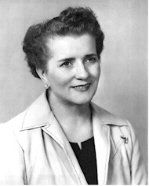Redistricting Historically Fails to Make Minnesota U.S. Representatives Vulnerable
Only 10 Representatives from Minnesota’s Congressional Districts have been defeated after redistricting in election years ending in ‘2’ since statehood; incumbents more likely to be defeated in ‘8’ and ‘0’ cycles

A Smart Politics analysis of more than 550 U.S. House contests in Minnesota dating back to the 1860s finds that the defeat of U.S. House incumbents is more likely to occur in election cycles ending in ‘8’ or ‘0’ than in cycles after redistricting ending in ‘2.’
In fact, of the 53 U.S. Representatives who have lost at the ballot box, only 10 have done so in years ending in ‘2’, or just 18.9 percent of all such incumbents.
(Note: This is an analysis of incumbents from Congressional districts. As such, the data does not include the nine incumbents who were defeated in at-large U.S. House contests or who came off an at-large election victory (e.g. Elections of 1857, 1859, 1860, 1932, and 1934)).
These findings seem to bolster the conventional wisdom that district lines are generally drawn by partisans every decade with an eye toward protecting incumbents – from both political parties.
The data is also a bucket of cold water to those DFL 6th CD residents who have been speculating that the 2011 redistricting process in Minnesota will serve to weaken controversial Republican incumbent Michele Bachmann, should she win her 2010 reelection bid and run again in 2012. (The 6th CD is expected to shed the most residents in the new 2012 map: 2008 U.S. Census estimates find it to be the most populous district in the state – with approximately 150,000 more residents than its neighboring 5th CD).
Still, redistricting can at times shake things up and make life miserable for incumbents – particularly when new lines are drawn placing them in a new congressional district. (Which, if Minnesota loses a seat through reapportionment could also happen to Bachmann or another U.S. Representative from the Gopher State).
Such was the fate of incumbents Bill Luther (forced from the 6th to the 2nd CD in 2002) and Arlen Erdahl (from the 1st to the 6th in 1982) who both lost their reelection bids directly after redistricting from the 2000 and 1980 Censuses respectively.

In 2002, Republican Mark Kennedy (pictured) won his 2nd CD race for his second term in D.C. after being elected as a freshman from the 6th CD in 2000. (Both districts lean Republican).
Similarly, Republican Vin Weber won his first term in the 6th CD in 1980, and won his second term representing the 2nd CD after redistricting in 1982.
But the defeat of incumbents has actually been more common in years ending in ‘8’ and ‘0’ than it has in redistricting years – accounting for 50.9 percent of all such defeats of U.S. Representatives in Minnesota (27 of 53).
In total, 15 of the 53 incumbents from congressional districts defeated in general elections lost in years ending in ‘8’ – although it has been more than 50 years since the last occurrence. In 1958, DFLer Coya Knutson, the first female U.S. Representative from Minnesota, lost her bid for a third term when Republican Odin Langen defeated her by 1.4 points that November.
In the previous two decades (1938, 1948), however, six incumbents were defeated, including 16-term Republican incumbent Harold Knutson from the 6th CD (in 1948) and the third to last Farmer-Laborite to represent Minnesota in the U.S. House – Paul Kvale from the 7th CD (in 1938).
Incumbents have also (comparatively) not fared as well in years ending in ‘0.’ Over the past 15 such cycles, 12 incumbents saw their U.S. House runs comes to an end.
An incumbent has lost in four of the last five election cycles ending in ‘0’ – the most recent of which being DFLer David Minge in 2000 when he lost by 155 votes to Republican Mark Kennedy in the 2nd CD.
Minnesota U.S. Representatives were also defeated at the ballot box in 1990 (Republican Arlen Stangeland to Collin Peterson in the 7th CD), 1970 (Republican Odin Langen to DFLer Bob Bergland in the 7th CD), and 1960 (DFLer Roy Wier to Clark MacGregor in the 3rd CD).
Number of Minnesota U.S. House Incumbents Defeated in General Elections by Cycle, 1862-2008
|
Year
|
#
|
%
|
Incumbents
|
|
‘2’
|
10
|
18.9
|
William Harries (1892), James Castle (1892), Loren Fletcher (1902), Andrew Volstead (1922), Halvor Steenerson (1922), Walter Judd (1962), Tom Hagedorn (1982), Arlen Erdahl (1982), Gerry Sikorski (1992), Bill Luther (2002)
|
|
‘4’
|
7
|
13.2
|
Osee Hall (1894), Melvin Baldwin (1894), Haldor Boen (1894), Frederick Stevens (1914), Melvin Maas (1944), Richard Gale (1944), Harold Hagen (1954)
|
|
‘6’
|
9
|
17.0
|
John Gilfillan (1886), Charles Towne (1896), James McCleary (1906), Knud Wefald (1926), William Pittenger (1936), William Pittenger (1946), Frank Starkey (1946), Alec Olson (1966), Gil Gutknecht (2006)
|
|
‘8’
|
15
|
28.3
|
Ignatius Donnelly (1868), Horace Strait (1878), Thomas Wilson (1888), John MacDonald (1888), Edmund Rice (1888), Clarence Miller (1918), William Carss (1928), Henry Teigan (1938), Dewey Johnson (1938), Paul Kvale (1938), John Bernard (1938), Harold Knutson (1948), Edward Devitt (1948), George MacKinnon (1948), Coya Knutson (1958)
|
|
‘0’
|
12
|
22.6
|
Henry Poehler (1880), Mark Dunnell (1890), Darwin Hall (1890), Samuel Snider (1890), Solomon Comstock (1890), William Carss (1920), Elmer Ryan (1940), John Alexander (1940), Roy Wier (1960), Odin Langen (1970), Arlan Stangeland (1990), David Minge (2000)
|
|
Total
|
53
|
100.0
|
|
Note: Data does not include the nine incumbents who were defeated in at-large U.S. House contests or who came off an at-large election victory (e.g. Elections in 1860, 1932, and 1934). The data also does not include 14 incumbents who failed to receive their party’s nomination. Data compiled by Smart Politics.
As the table above indicates, defeating incumbents has been least common in years ending in ‘4’ and ‘6.’

Overall, just seven incumbents have fallen in election cycles ending in ‘4.’
Meanwhile, nine incumbents have been defeated in general elections in years ending in ‘6,’ including just two over the last six decades: Tim Walz’s defeat of six-term Republican Gil Gutknecht in the 1st CD in 2006 and Republican John Zwach’s defeat of two-term DFLer Alec Olson in 1966.
Even after adjusting for the number of incumbents who have run each election cycle, incumbents are defeated at a higher rate in years ending in ‘8’ and ‘0’ than after redistricting in ‘2’ cycles:
· 14.7 percent of incumbents have lost in election years ending in ‘8’
· 12.4 percent have lost in years ending in ‘0’
· 11.9 percent have lost in years ending in ‘2’
· 9.3 percent have lost in years ending in ‘6’
· 7.8 percent have lost in years ending in ‘4’
Percentage of Minnesota U.S. Representatives Defeated by Election Cycle, 1862-2008
|
Year ending in
|
Lost
|
On ballot
|
Percent
|
|
‘2’
|
10
|
84
|
11.9
|
|
‘4’
|
7
|
90
|
7.8
|
|
‘6’
|
9
|
97
|
9.3
|
|
‘8’
|
15
|
102
|
14.7
|
|
‘0’
|
12
|
97
|
12.4
|
|
Total
|
53
|
470
|
11.3
|
Note: Data does not include the nine incumbents who were defeated in at-large U.S. House contests or who came off an at-large election victory (e.g. Elections in 1860, 1932, and 1934). The data also does not include 14 incumbents who failed to receive their party’s nomination. Data compiled by Smart Politics.
Follow Smart Politics on Twitter.
